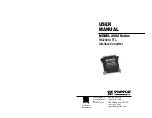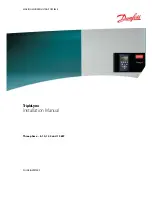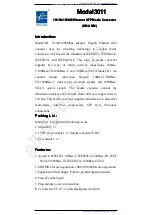
~
20
~
ЕТ-485
NOVATEK-ELECTRO
APPENDIX B
(recommended)
EXAMPLES OF NETWORKS TOPOLOGY
1. ACCESS TO RS-485 NETWORK FROM ETHERNET NETWORK
Figure B.1
– Access to RS-485 network (Modbus RTU/ASCII) via Ethernet (Modbus TCP) network
ET-485 is used in the RS-485 master mode, receiving queries from clients in Ethernet or Internet network. The
queries are sent to Modbus network. Redirection to remote server is not used.
2. MODBUS NETWORK EXTENSION
Two ET-485 units are used, connected as shown in Figure B.2.
ET-485
“a” is connected in the slave mode to RS-485 Modbus “A” network (with a master device). ET-485 “b” is
connected in the master mode with a static IP address to Modbus
“B” network (with slave devices). Both units are
connected into one
Ethernet network or connected by means of routers via Internet so that unit “a” can be connected
to unit “b”.
Unit “a” is set for query redirection to the remote server with Modbus TCP address and port, which unit “b” has.
All Modbus devices, including both ET-485 units and devices in both Modbus networks, must have different Modbus
addresses (identifiers.) The queries, sent by the master device in
“A” network, are redirected by unit “a” to unit “b”.
Unit “b” sends them to the devices in “B” network.
N o te
– One should avoid cyclic redirection of queries. If the unit, whereto the queries are redirected, is
set to such redirection that the query will be transferred to its initial sender, the queries will be transferred
nonstop, which will cause slowdown and then shutdown of query processing by these units.
If some other devices, besides the master device and ET-485
unit “a”, are connected in “A” network, the
exception code generation must be disabled in the settings of ET-485 units, if there is no answer and no connection.
Otherwise, while the master device is sending queries to other slave devices in “A” network, ET-485 unit “a” can
generate or transfer an exception code, received from unit “b”, simultaneously with transferring a correct answer from
another device, which will result in network collision.
3. INCREASE OF THE NUMBER OF SIMULTANEOUSLY CONNECTED DEVICES
The diagram in Figure B.2 allows connecting the number of devices, specified in the technical characteristics,
giving the opportunity to double the number of devices, available to the master device.
4. MATCHING OF MODBUS NETWORKS
The diagram in Figure B.2 also allows connecting two Modbus networks with different characteristics: Modbus
RTU network and ASCII network, networks with different exchange rates etc. herewith, each ET-485 unit is set for
the corresponding characteristics of its Modbus network, and sufficient delays for passing and processing of queries
and answers are chosen for both units.






































